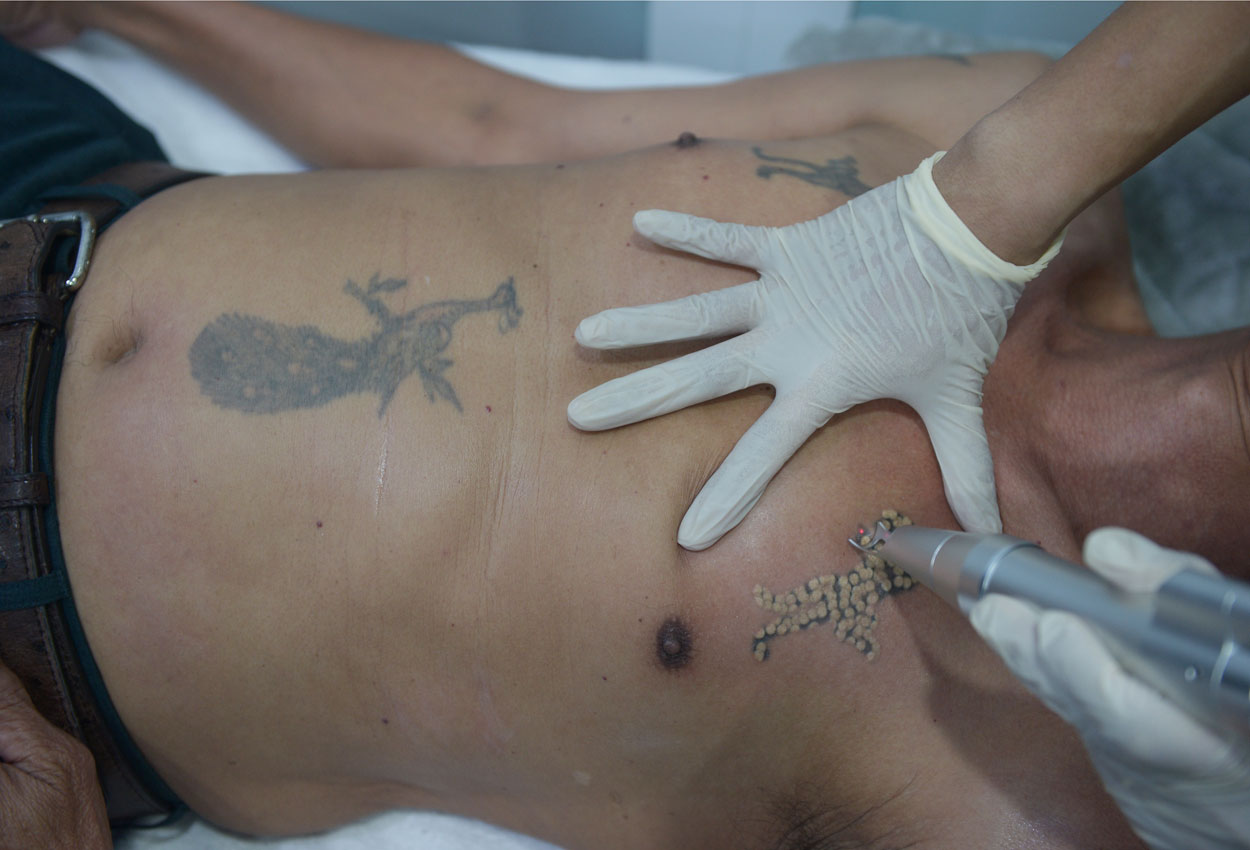They may have already changed their ways, but the drawings inked into their skin draw attention and make it hard for them to start a new life.
Some former offenders, though, are getting help to erase such reminders of their unsavoury past, under a new pro bono tattoo-removal programme. Called The Next Chapter Project, it is led by medical aesthetics supplier Absolute MS, which has roped in five doctors for the project.
Absolute MS managing director Jimmy Lok told The Straits Times: “We have been in the business for eight years, and we have been distributing medical lasers. We wanted to give back to society, and we thought this initiative is a good way to use the devices for a good cause.”
Executive project coordinator Deborah Seah, also from Absolute MS, said: “These ex-offenders have turned over a new leaf, but the social prejudice still remains. We want to help uncover the changed person that they already are.”
Absolute MS works with welfare groups that help former offenders, such as The Helping Hand and The New Charis Mission, to identify people who need tattoo removal.
Since the project started last month, 15 people have been identified for tattoo removal, including five who are not former offenders but come from disadvantaged backgrounds. The first person to have his tattoo removed went for his first session last Friday.
Dr Daniel Chang, who performed the tattoo removal, said: “It is meaningful to be able to help them, using what we already know and have learnt.” He does about 10 tattoo-removal sessions a month. The removal usually has to be done over several sessions, one to two months apart.
The number of sessions needed depends on factors such as tattoo size and colour. Tattoos in colours like red, green and yellow are harder to remove; likewise, those done many years ago or by professional tattoo artists.
“The removal process is painful, but patients will hardly tell you it is painful,” said Dr Chang.
“It is not difficult for them to start, but coming back takes discipline. When I see that they are so focused on getting the tattoos removed and they show the same level of enthusiasm each time, I feel that what I am doing is really helping them.”
There are other such programmes for former offenders. A project by the Singapore Anti-Narcotics Association and National Skin Centre offers a subsidy of up to 90 per cent for tattoo removal. The Singapore Prison Service offers the service free for inmates intent on renouncing gangs and their old ways.
Prison Fellowship Singapore executive director Andrew Tay welcomed the latest initiative.
“The Next Chapter Project’s objective aligns with our endeavours to give our clients a shot at reintegration into society,” he said.
Taking the first step to remove tattoos inked over 40 years ago
More than 30 years have passed since his release from prison. He now works as a part-time cleaner and his tattoos cannot be seen under a short-sleeved shirt.
But the 65-year-old was still determined to remove the tattoos, a mark of his past.
Peter (not his real name) went for his first appointment at Eden Medical Aesthetics clinic last Friday, more than 40 years after he first had the tattoos inked on his upper arms, chest and abdomen.
He is the first of 15 people to have their tattoos removed for free, under The Next Chapter Project, a new initiative by medical aesthetics supplier Absolute MS.
The tattoos on his upper arms depict women, while those on his chest and abdomen depict leopards and a peacock. The former gangster told The Straits Times in Mandarin: “I chose images from a book that the tattoo artist gave me. The other gang members had tattoos too, so I followed suit.”
He was in jail twice in his 20s – over 10 years in total – for armed robbery and clashing with rival gangs.
He had considered removing his tattoos previously, but techniques in the past – he heard of some that involved the use of acid – were more painful.
And modern methods using laser were expensive. One session usually costs at least $100 and a person may require several sessions to remove the tattoos, depending on factors such as size and colour.
The social stigma related to people with tattoos still exists, he said. In the past, his main reason for wanting to remove them was a practical one – he always had to keep his shirt on at home as his parents did not know about them.
Three years ago, he started swimming two to three times a week to alleviate his back problems. But he felt embarrassed at the pool. He said: “When people saw my tattoos, they would move away from me or give me weird stares. I now wear a swimshirt to cover them, but I’d much prefer not having to wear it.”
At his first tattoo removal session last week, he was given cream to numb the skin areas with tattoos for about 20 minutes. The removal process took about 10 minutes.
He pursed his lips throughout and later rated the pain a “four upon 10”, with 10 being the most painful. But he smiled after seeing that his tattoos looked lighter.
Dr Daniel Chang, who did the tattoo removal, said Peter would likely have to return for eight to 10 more sessions. Peter said: “The removal of the tattoo from my tummy area was particularly painful. But I can tolerate it and I’ll come back to do the rest.”

This article was first published on September 13, 2016.
Get a copy of The Straits Times or go to straitstimes.com for more stories.






